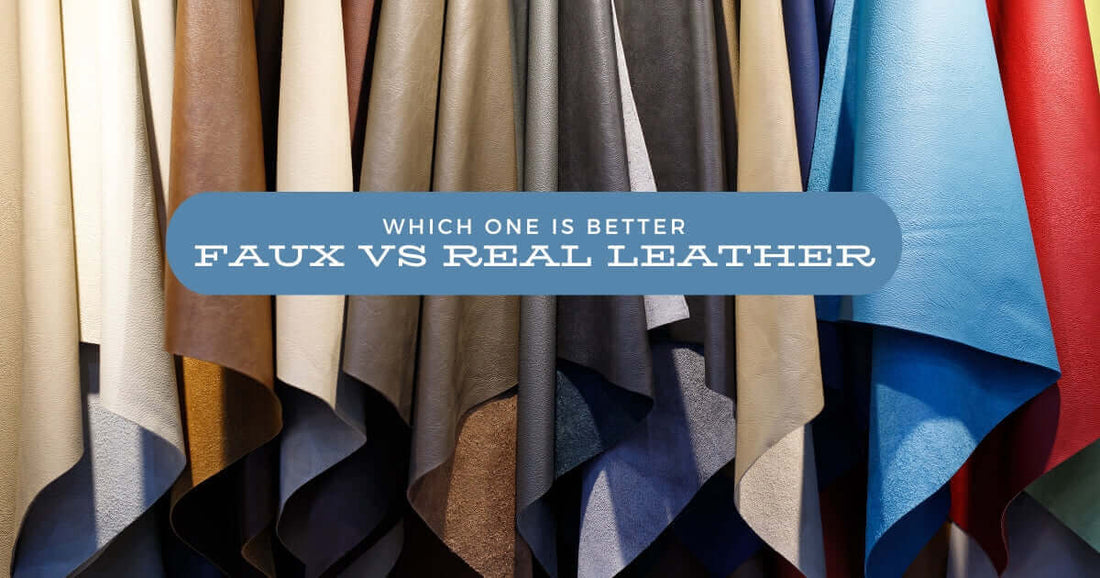
Faux vs. Real Leather: Which One is Best for You?
Share
Faux vs Real Leather
When shopping for leather bags and wallets, one of the biggest decisions you’ll face is whether to choose real leather or faux leather. Both have their advantages, and your decision will depend on factors like durability, aesthetics, budget, and personal preferences. In this guide, we’ll break down the key differences between real and faux leather to help you make an informed decision.
What is Real Leather?
Real leather is made from animal hides, most commonly cowhide. It is tanned and treated to create a durable, flexible, and long-lasting material. There are different grades of real leather, including:
- Full-Grain Leather: The highest quality leather that retains the natural grain of the hide, making it strong, durable, and able to develop a beautiful patina over time.
- Top-Grain Leather: Slightly processed to remove imperfections, making it smoother and more uniform.
- Genuine Leather: A lower-quality leather made from the remaining layers of the hide, often processed to enhance its look and feel.
- Bonded Leather: Made from leftover leather scraps that are bonded together with adhesives.
What is Faux Leather?
Faux leather, also known as synthetic leather, is made from plastic-based materials like polyurethane (PU) or polyvinyl chloride (PVC). It is designed to mimic the look and feel of real leather but at a more affordable price.
Some common types of faux leather include:
- PU Leather: A more eco-friendly and flexible alternative to PVC, offering a closer resemblance to real leather.
- PVC Leather: More rigid and less breathable but highly water-resistant and durable.
- Vegan Leather: A term often used for PU or PVC leather, designed to appeal to those looking for cruelty-free alternatives.
Comparing Faux and Real Leather
| Feature | Real Leather | Faux Leather |
|---|---|---|
| Durability | Lasts decades, develops a patina | Wears out faster, prone to peeling |
| Feel & Smell | Soft, rich texture with a natural smell | Synthetic feel, chemical scent |
| Aging Process | Improves with time | Deteriorates with use |
| Maintenance | Requires conditioning | Easy to clean, but less repairable |
| Sustainability | Biodegradable but involves animal use | Made from plastics, less eco-friendly |
| Price | More expensive | More affordable |
Which One Should You Choose?
Your choice between faux and real leather depends on your priorities:
- If you value longevity and craftsmanship, Real leather is the better choice, as it lasts for decades and ages beautifully.
- If you prefer affordability and ease of maintenance, Faux leather offers a budget-friendly, low-maintenance alternative.
- If sustainability is a concern: While faux leather avoids animal use, its plastic content can be an environmental drawback. Look for ethically sourced real leather or innovative plant-based alternatives.
- If you want a premium, timeless style, Real leather products, such as leather wallets and bags, provide unmatched elegance and sophistication.
Final Thoughts
Both faux and real leather have their place in fashion and accessories, but real leather remains the gold standard for durability, quality, and style. If you're looking for handcrafted, premium leather bags and wallets in Australia, explore our collection. Our pieces are designed to last, offering the perfect blend of tradition and contemporary design.
